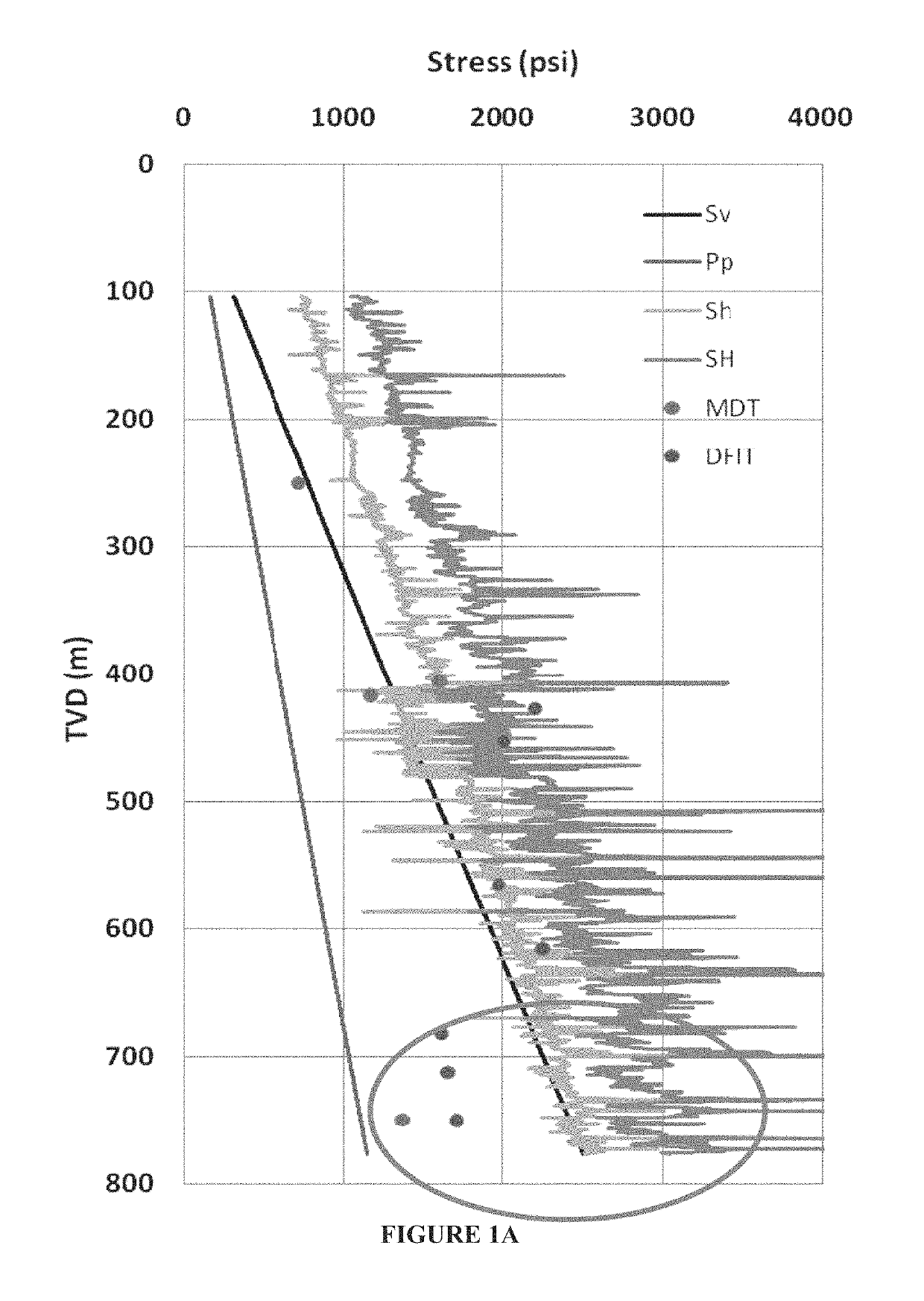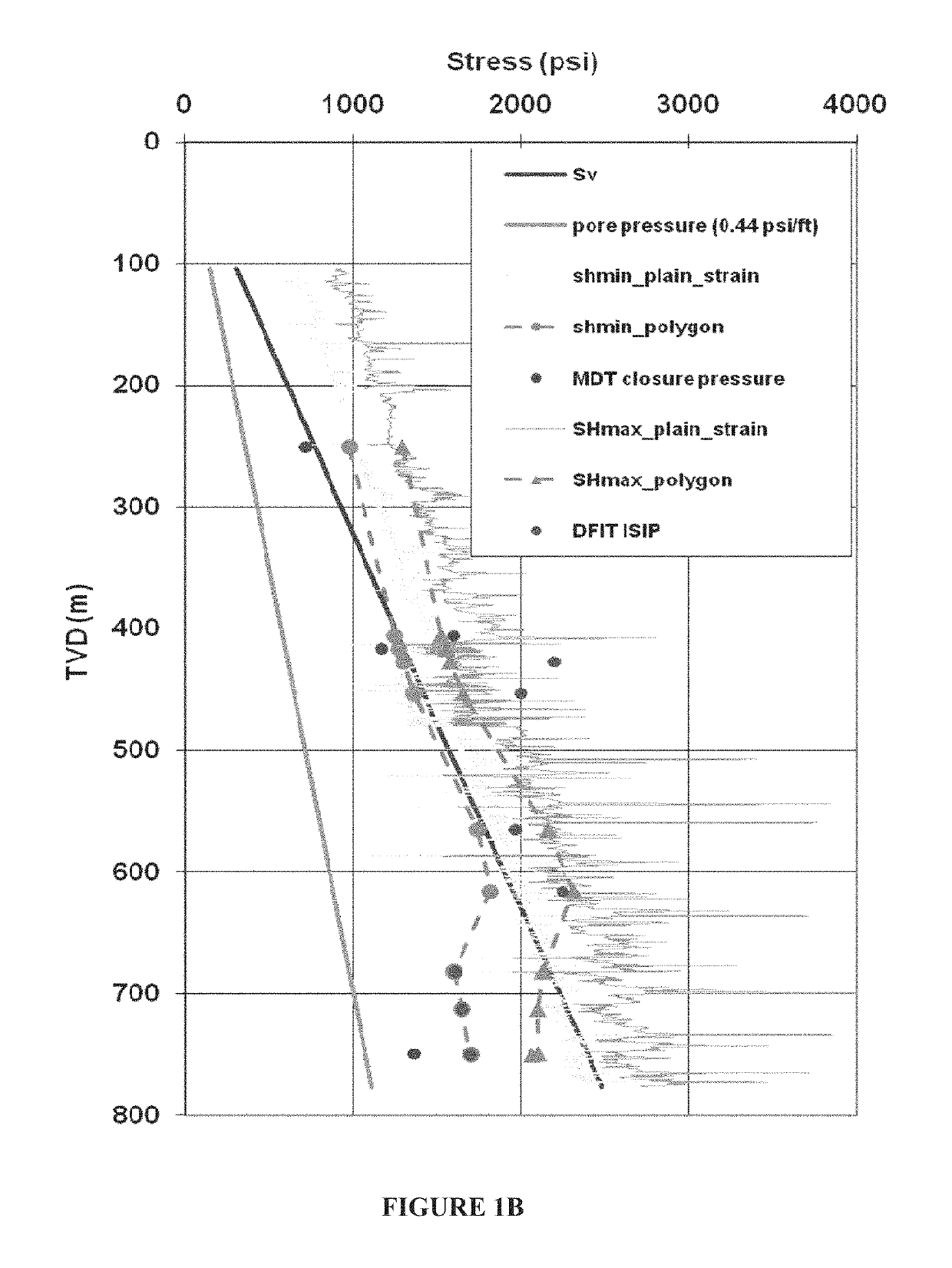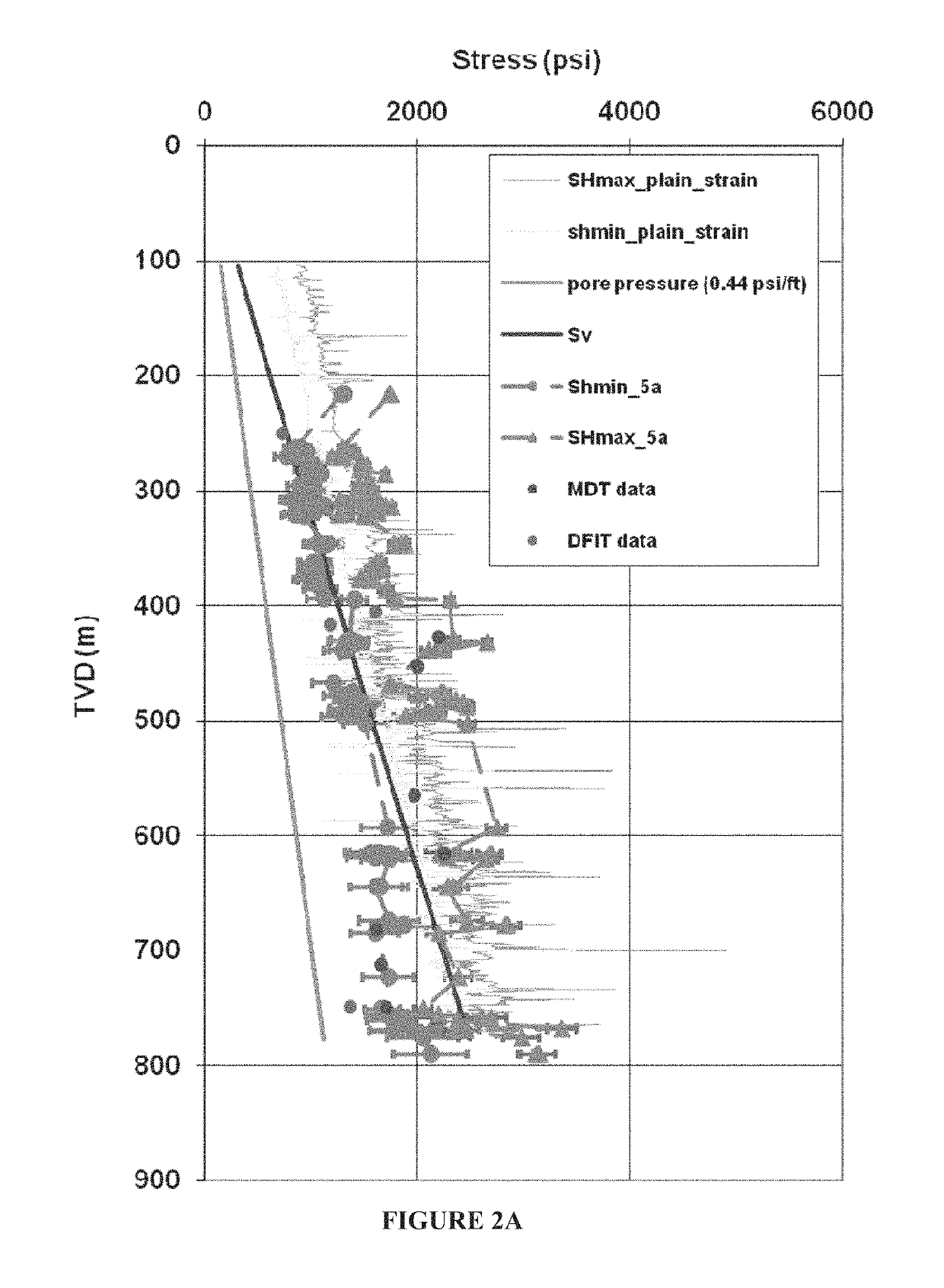Method for estimating stress magnitude
a stress magnitude and magnitude technology, applied in the field of horizontal stress estimation, can solve the problems of large loss, limited number of input parameters, and large time saving, and achieve the effect of improving permeability for economic production
- Summary
- Abstract
- Description
- Claims
- Application Information
AI Technical Summary
Benefits of technology
Problems solved by technology
Method used
Image
Examples
Embodiment Construction
[0076]FIG. 6 illustrates the simplified flow chart of the disclosed method. The method disclosed herein combines the frictional equilibrium concept with the uniaxial, elasticity concepts.
[0077]The first step 601 is measuring and obtaining physical properties along the wellbore, including one or more of density log, compressive and tensile rock strength, frictional strength of the discontinuities, wellbore path, position and type of wellbore failure observed in wellbore images and mud weight. Of course, if this data is already available, one can proceed directly to step 602.
[0078]In step 602, these physical properties are used as input to the modified frictional equilibrium solution to obtain an approximation of a first horizontal stress. It is noted that the frictional equilibrium solution is preferably modified from the conventional ones so that the approximation is more accurate. However, conventional equations can also be used throughout.
[0079]In step 603, a modified uniaxial ela...
PUM
 Login to View More
Login to View More Abstract
Description
Claims
Application Information
 Login to View More
Login to View More - R&D
- Intellectual Property
- Life Sciences
- Materials
- Tech Scout
- Unparalleled Data Quality
- Higher Quality Content
- 60% Fewer Hallucinations
Browse by: Latest US Patents, China's latest patents, Technical Efficacy Thesaurus, Application Domain, Technology Topic, Popular Technical Reports.
© 2025 PatSnap. All rights reserved.Legal|Privacy policy|Modern Slavery Act Transparency Statement|Sitemap|About US| Contact US: help@patsnap.com



